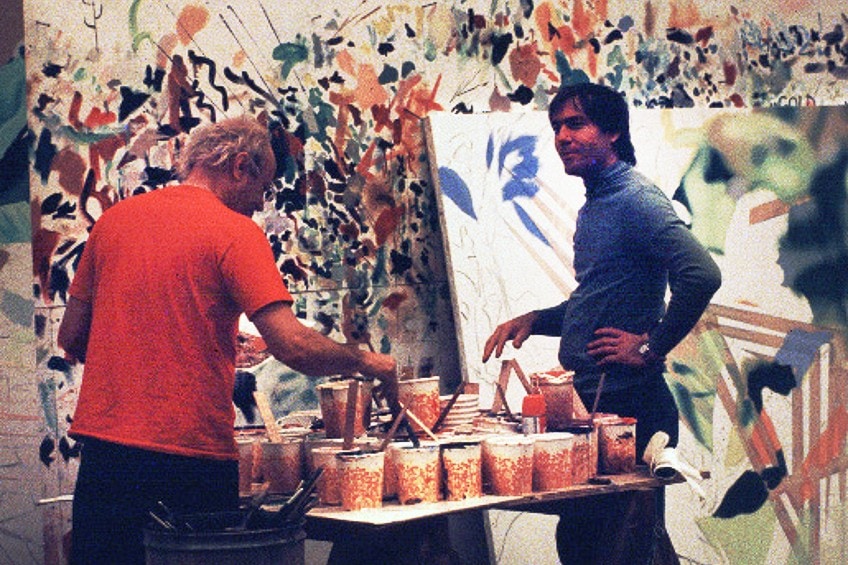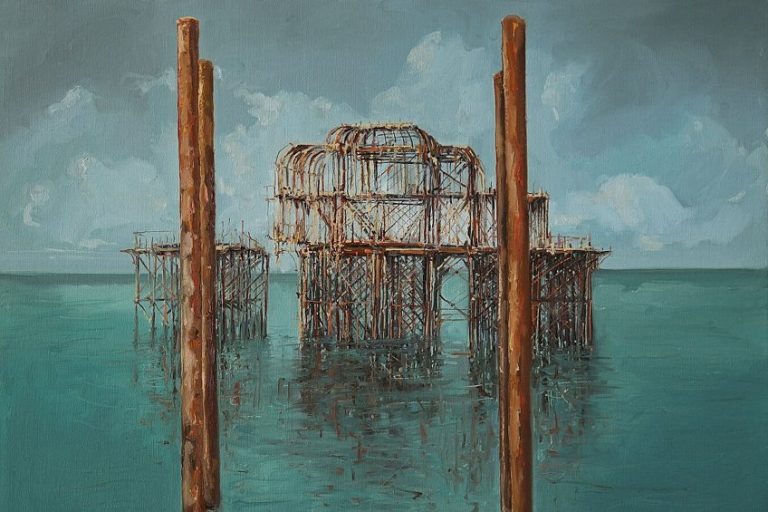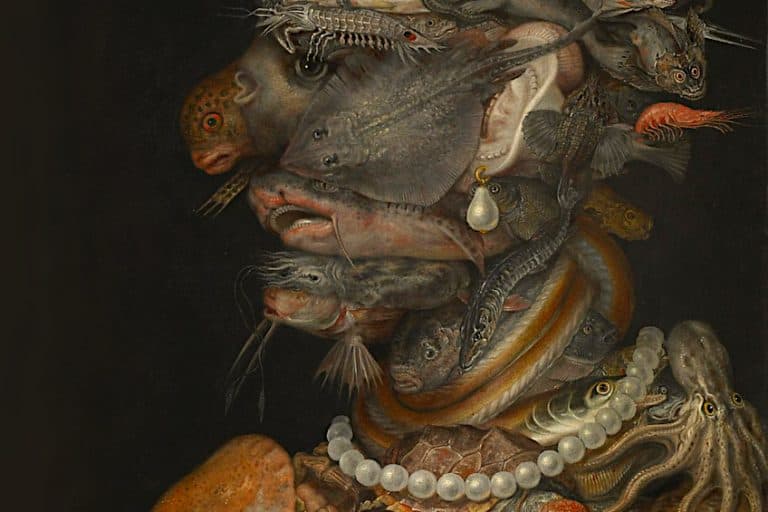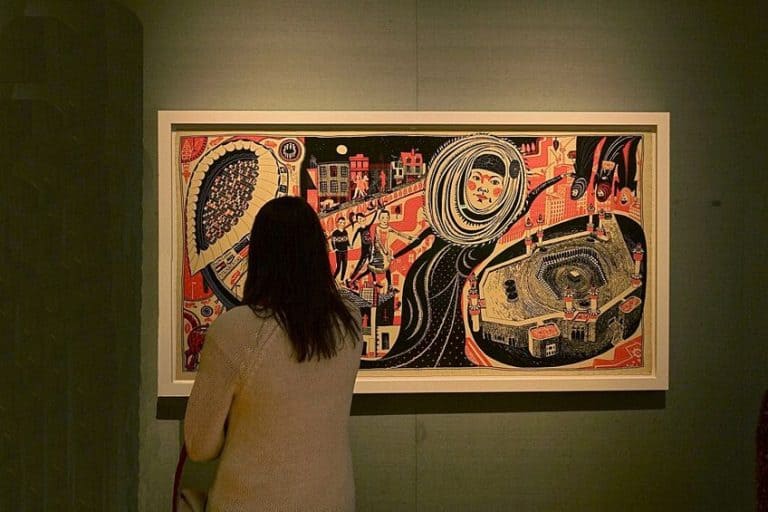James Rosenquist – A Look at American Artist James Rosenquist
James Rosenquist’s artworks featured collages of commercial media images that were arranged in juxtaposing fragments. James Rosenquist’s paintings were then enlarged and displayed in galleries, often covering the whole wall. James Rosenquist’s artwork was utilized to reflect his cultural and social beliefs through the seemingly haphazard arrangement of images with no apparent connection aside from the underlying message implied. To learn more about this artist, let’s take a look at James Rosenquist’s biography.
James Rosenquist’s Biography
| Nationality | American |
| Date of Birth | 29 November 1933 |
| Date of Death | 31 March 2017 |
| Place of Birth | North Dakota, USA |
James Rosenquist’s paintings represented his desire to convey the misleading and persuasive practices of advertisements, by using Surrealistic artworks to blend adverts with pictures of daily life in a way that one would become aware of the overbearing presence and influence of commercialism in our lives.
He was also considered the voice of the artists of his time, as he advocated for the rights of artists in the 1970s.
James Rosenquist’s artworks are appreciated for their continuing relevance in an ever-changing world, as they evolved beyond being simply a critique of media, but rather a study of the point at which aesthetics and science intersect.
Early Years
James Rosenquist was an only child and was often sent to stay with his grandparents as his father had to travel regularly to repair planes, especially during World War II. During those years, Rosenquist moved often, attending several schools and earning extra money picking fruit and delivering newspapers.
The family eventually relocated to Minneapolis where his mother would often take him to the local museums and galleries.
This ignited his passion for art, and despite not being able to afford paper to draw on, he would use reams of wallpaper that had been thrown out as his canvas. Every day he would sit and sketch boats, cars, and scenes of war.
One of Rosenquist’s paintings was submitted to a competition when he was in the eighth grade, he won and received free classes at Minneapolis’ School of Art as the prize.
Training
After graduating from the University of Minnesota, Rosenquist started his formal art training, studying under the artist, Cameron Booth, in 1952. Cameron Booth was a renowned Abstract Expressionist from the United States who had previously been an apprentice to Hans Hofmann, the famous artist from Germany. He would take his students to various galleries and introduce them to contemporary and modern art movements.
Before the days of printed signboards, artists were required to hand paint them and Rosenquist often made a living painting commercial boards in towns such as Iowa and Minnesota.
He would be given small images to work from and would be required to create large-scale pieces that could be seen from quite a distance by cars driving past. This large-scale style and ability to create eye-catching pieces would have a lasting impact on his art, yet he also experimented with Abstract Expressionism. With Booth’s encouragement, Rosenquist left the Midwest and enrolled in New York’s Art Students League in 1955.
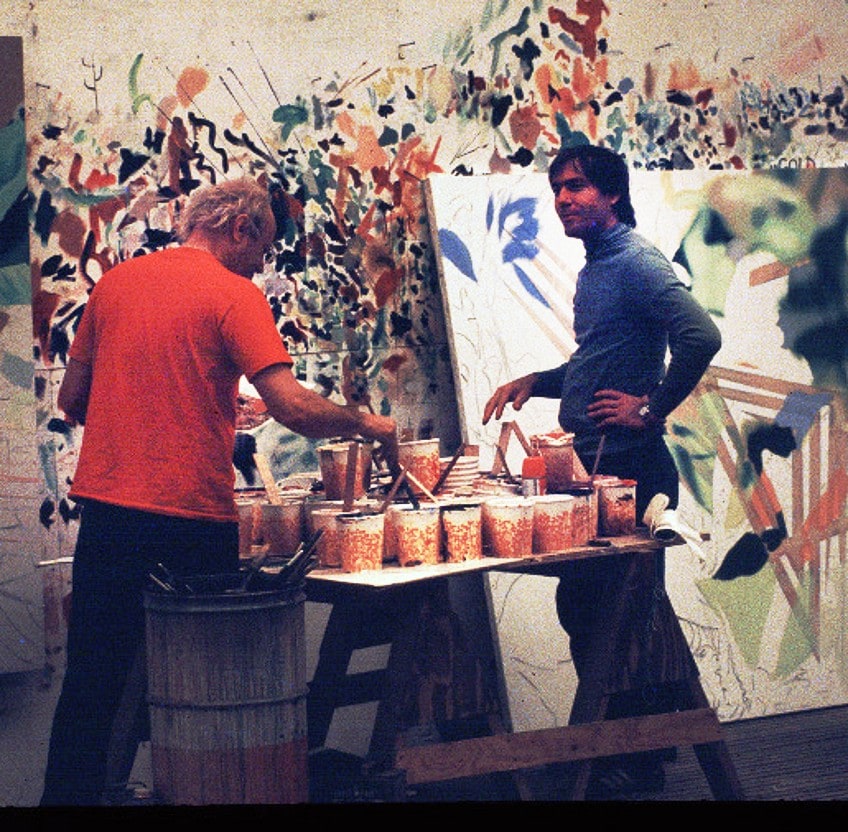
The young artist considered his tutor to be a man who knew much about the world and did not hesitate to leave when Booth suggested that it was time for him to explore the world beyond his usual surroundings. While there, he studied with other artists such as George Grosz, Will Barnet, and Vaclav Vytlacil, and also encountered individuals such as Allen Ginsberg ad Jack Kerouac – both famous members of the Beat Generation crowd. Much of how the young artist felt about consumerism was formed in his time in New York when he found himself living with no income and on the verge of poverty.
Rosenquist divided his time between creating large billboard paintings for advertising companies and painting small Abstract Expressionist works at his workshop.
He was able to learn much from the older artists around him who gave him tips on perspective and coloring – something which he likened to being an apprentice to a group of Old Masters. During his time painting billboards, he learned how to paint in a style that mimicked the coloring of films, applying these techniques to his works after quitting in 1960, following the death of another billboard painter he knew who had fallen while painting a billboard.
Mature Period
In 1960, Rosenquist started to rent studio space in Coenties Slip and married Mary Lou Adams, a fabric designer. It was during that period that he began to reassess his painting style. While it had been a relevant and impactful movement in the 1950s, by the early 1960s, Abstract Expressionism had seemed to have lost momentum and was taking a back seat to the emerging trends and styles.
The style was growing restrictive for the artist who wished to go beyond the mere representation of form and color and start creating works that were more figurative and unambiguous.
Instead, he combined the techniques he had acquired through making billboards with a new Realism aesthetic. He aimed to comment on the social and cultural aspects of modern America by creating large works that featured fragmentary media images arranged into a collage.
At that point, James Rosenquist’s artworks began to be noticed by renowned gallery curators such as Leo Castelli and Richard Bellamy.
Around that same period, similar artists such as Roy Lichtenstein and Andy Warhol began exhibiting their works, and the three were among those regarded as pioneers of the emerging Pop art movement, despite never having met until later on.
Later Period
In 1976, Rosenquist built a new studio in Aripeka which provided him with more room for his massive artworks. He became quite politically active throughout the 1970s, protesting against the war in Vietnam as well as lobbying for artists’ rights with the government.
During this period, Rosenquist’s paintings reflected many of his views about politics and technology and their tumultuous relationship with the natural world.
His subject matter would continue to change over the decades, with ecological issues being the most prominent subject in his 1980s works, and space became the focus of his artistic endeavors in the 1990s. The dominant theme in all of James Rosenquist’s artworks has always been the idea of chaos. His collages would feature swirling and colliding images that would overlap each other, connecting seemingly disconnected images in unique ways that impart a deeper narrative.
Until his death in 2017, he always lamented the fact that so many of his friends and fellow artists had long since passed on, leaving him alone. Many of his artworks were unfortunately destroyed in a fire that destroyed his studio in 2009.
The rest of his artworks now reside in galleries and private collections, each one of them created by the artist to the best of his ability, no matter whether it was for a gallery or a commissioned piece.
Notable Artworks
James Rosenquist’s artworks went through many shifts in tone and style through the decades, yet a certain aesthetic appeal and way of viewing the world tied them together as a cohesive oeuvre. From billboards to abstracted works, and collages, he has always sought to impart a personal perspective of the corporate world, depicting it as an ever-present influence on our everyday lives and habits. Here are a few notable examples of Rosenquist’s paintings.
| Artwork Title | Medium | Dimensions | Location |
| President Elect (1961) | Oil on masonite | 228 x 365 | Musée National d’Art Modern, Paris |
| Marilyn Monroe, I (1962) | Oil and spray enamel | 236 x 183 | Museum of Modern Art, New York |
| House of Fire (1981) | Oil on canvas | 198 x 502 | Metro Museum of Art, New York |
| The Swimmer in the Econo-mist (1998) | Oil on canvas | 403 x 610 | Solomon R. Guggenheim Museum, New York |
Recommended Reading
We have provided James Rosenquist’s biography in a brief but concise summary in this article, yet there’s plenty more to learn about James Rosenquist’s paintings and life. Whether you are just wanting to enjoy a few books that explore James Rosenquist’s artworks, or find out what else happened during his lifetime, these book recommendations can help find what you need!
James Rosenquist: The Big Paintings: Thirty Years (1994) by Leo Castelli
James Rosenquist was known for his massive paintings that took up entire walls of gallery spaces. This was a style he learned while working as a billboard painter in the 1950s. Today we have over 30 years of massive artworks to enjoy by the artist. This book brings the finest together in one comprehensive publication.
- Comprehensive overview of some of Rosenquist's paintings
- Eight fold-out sections of Rosenquist's larger works
- Accompanied by reviews and interviews
Painting Below Zero (2009) by James Rosenquist
This book was penned by the late James Rosenquist himself. In it, he writes about his family as well as his experiences in New York where he attended the Art Students League. If you want to learn more about Rosenquist’s paintings and life in his own words, this is the ideal book for you.
- An in-depth look at Rosenquist's childhood, as written by the artist
- A comprehensive overview of Rosenquist's life and career
- Ideal for those wanting to know more about the artist
Along with Warhol and Lichtenstein, James Rosenquist was often regarded as one of the original Pop art pioneers. However, his style went far beyond the confines of a single genre or theme, and he often shifted his style to match his current feelings and stance from decade to decade. He used his art to share his thoughts on many issues of the day, from political to environmental concerns.
Frequently Asked Questions
Who Was James Rosenquist?
James Rosenquist began his art career as a billboard painter in the 1950s, creating massive pieces to attract the attention of passersby. This style became a prominent feature of his works when he went on to create very large collage paintings that would require large surfaces for display. He was an admirer of the Abstract Expressionist style in his formative years but went on to be a leading figure in the Pop Art movement as well.
What Were Rosenquist’s Paintings About?
James Rosenquist’s artworks covered a wide array of subject matter throughout his decades-long career. His collages would feature snippets of mass media, arranged in swirling fragments that were designed to draw attention to how adverts permeated our daily lives. Later on, his themes would include science, nature, and technology.
Isabella studied at the University of Cape Town in South Africa and graduated with a Bachelor of Arts majoring in English Literature & Language and Psychology. Throughout her undergraduate years, she took Art History as an additional subject and absolutely loved it. Building on from her art history knowledge that began in high school, art has always been a particular area of fascination for her. From learning about artworks previously unknown to her, or sharpening her existing understanding of specific works, the ability to continue learning within this interesting sphere excites her greatly.
Her focal points of interest in art history encompass profiling specific artists and art movements, as it is these areas where she is able to really dig deep into the rich narrative of the art world. Additionally, she particularly enjoys exploring the different artistic styles of the 20th century, as well as the important impact that female artists have had on the development of art history.
Learn more about Isabella Meyer and the Art in Context Team.
Cite this Article
Isabella, Meyer, “James Rosenquist – A Look at American Artist James Rosenquist.” Art in Context. September 9, 2022. URL: https://artincontext.org/james-rosenquist/
Meyer, I. (2022, 9 September). James Rosenquist – A Look at American Artist James Rosenquist. Art in Context. https://artincontext.org/james-rosenquist/
Meyer, Isabella. “James Rosenquist – A Look at American Artist James Rosenquist.” Art in Context, September 9, 2022. https://artincontext.org/james-rosenquist/.


